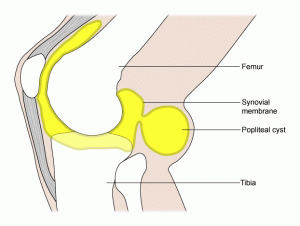Examining meniscus tear symptoms and signs will help to treat this knee problem at the earliest and live a healthy lifestyle. Meniscus is an integral part of the knee joint, present on both the sides of the joint it provides dexterity and protection to them. Meniscus tear can occur due to sudden and jerky movement, or while indulging in rigorous physical activity such as playing sports, or lifting heavy weight. Almost every sportsman experiences physical injury at some of time, knee injuries are also fairly common among athletes, and adventure sports persons. Aging is also one of the common causes that results in disintegration or breaking down of the meniscus cartilages, leading to loss of agility.
Symptoms and Signs of Meniscus Tear
Meniscus tears are primarily of three types :-
- Minor Meniscus Tear
- Moderate Meniscus Tear
- Severe Meniscus Tear
Signs of Minor Meniscus Tear could be slight pain and discomfort, which can go unnoticed by the injured individual. Few days of light physical activities and rest can help you get back to daily routine soon enough. This type of tear can heal on its own over a period of time.
Moderate meniscus tear can be painful and significantly bring down physical activities due to swelling and discomfort. After suffering the injury a person can feel his condition worsening and would require an examination by the orthopedic.
Severe meniscus tear is caused when a portion of the torn meniscus gets stuck inside the joint space causing severe pain and lack of normal movement. This condition requires immediate consultation with an orthopedic.
Human knee is specially designed to support its erect position. The knees have to support entire body weight of a person, while doing physical activities such as walking, running and standing. Constant use of knees in our activities leads to lot of strain and can even lead to tissue injuries such as meniscus tear.

Physiological importance of meniscus
Knee bones consists of three bones which conjoin at the knee joint, thigh bone (femur), shin bone (tibia), and knee cap ( pettela ). The Pettela is present at the front of the joint providing much needed mobility to the knees. The shin bone and the thigh bones have articular cartilage, which are present at their ends making the bones glide smoothly over one another. The knee joint also contain another important cartilage which acts as the shock absorbing component of the knees, known as Meniscus. Menisci are wedge shaped cartilage present in the knee joint, which acts as a cushion to provide protection from injuries caused by sudden jerks or strenuous work.
Meniscus are structurally and functionally different from the articular cartilage; it is tough and elastic in nature. Any damage to the meniscus can lead to difficulty in movement, stiffness of the joint, pain, and discomfort. Articular cartilage which helps the joint bone to slide over each other is also affected if the meniscus is severely damaged. If this condition persists, it can expose the bones due to gradual wearing down of the articular cartilage leading to osteoarthritis.